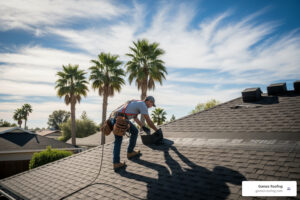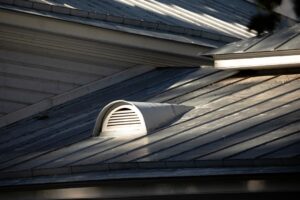TPO vs. EPDM: Key Differences Unveiled
As flat-roof specialists in Florida, we often see property owners weighing TPO roofing against EPDM roofing to protect their buildings from sun, wind, and rain. Choosing between these single-ply membranes can save thousands over a roof’s life while optimizing energy performance in Broward, Miami-Dade, or Palm Beach counties. In this guide, you’ll discover:
- What TPO roofing is and how its thermoplastic composition delivers UV resistance, reflective cooling, and seam strength.
- What EPDM roofing is and how its synthetic-rubber makeup offers flexibility, longevity, and ease of repair.
- A direct material and installation comparison, complete with EAV tables on composition, seam methods, durability, lifespan, and maintenance.
- Cost analysis highlighting upfront investment, energy-cost savings, and maintenance outlays.
- Decision factors—climate, budget, energy goals—and scenarios favoring one membrane over the other.
- Why Gomez Roofing’s local expertise in Commercial TPO Roofing and full-service capabilities make us the right choice for your next reroof.
What Is TPO Roofing? Composition, Benefits, and Key Features
Thermoplastic polyolefin (TPO) roofing is a single-ply membrane composed of polypropylene and ethylene-propene rubber that welds into a seamless, reflective surface. Its white or light-tan finish repels up to 87 percent of UV rays, reducing cooling loads in Florida’s heat. TPO’s heat-welded seams lock out moisture and resist punctures, making it ideal for commercial buildings and residential low-slope roofs.
Key benefits of TPO roofing include:
- Enhanced energy efficiency through high solar reflectivity and thermal emittance.
- Superior UV and ozone resistance that slows membrane aging.
- Robust puncture resistance from multi-layer reinforcement.
- Cost-effective installation and recyclability at end of life.
TPO Roofing Benefits
TPO roofing offers several benefits, including energy efficiency through high solar reflectivity, durability, and ease of installation. It is also environmentally friendly due to its recyclability.
Clearline Technologies, 5 Pros (and 2 Cons) of TPO Roofing, 2024
This citation supports the article’s discussion of the benefits of TPO roofing.
What materials make up TPO roofing membranes?
TPO membranes consist of a polymer blend reinforced with polyester or fiberglass scrim.
| Raw Polymer Blend | Reinforcement Layer | Role |
|---|---|---|
| Polypropylene | Polyester Scrim | Provides tensile strength |
| Ethylene-Propylene Rubber | Fiberglass Scrim | Offers flexibility and tear resistance |
| Additives (UV stabilizers) | — | Enhance weatherability |
This layered assembly yields a lightweight membrane with high seam integrity and long-term dimensional stability.
How does TPO roofing perform in Florida’s climate?
In South Florida’s intense sun and heat, TPO’s high solar reflectance index (SRI) lowers roof deck temperatures by up to 30 °F. Its UV-resistant formulation prevents chalking and brittleness over time. TPO also meets local building codes for hurricane uplift, making it well-suited to the region’s severe weather demands.
What Is EPDM Roofing? Composition, Benefits, and Key Features
Ethylene propylene diene monomer (EPDM) roofing is a single-ply rubber membrane known for its elasticity and proven track record. Typically black but available in white coatings, EPDM stretches to bridge gaps and withstand thermal expansion without stress cracks.
Core characteristics of EPDM roofing include:
- Long service life of 25–40 years under normal use.
- Excellent flexibility down to –40 °F and resilience in fluctuating temperatures.
- Simple seam attachment via adhesives or factory-taped seams.
- Outstanding weather and ozone resistance for low maintenance.
EPDM Roofing Benefits
EPDM roofing is known for its longevity, often exceeding 30 years, and its resistance to weather, including extreme temperatures. It also offers energy efficiency and low maintenance.
Expert Advice, What are the benefits of EPDM Rubber Roofing?, 2024
This citation supports the article’s discussion of the benefits of EPDM roofing.
What materials are used in EPDM roofing membranes?
EPDM membranes comprise synthetic rubber layers reinforced with polyester or nylon scrim.
| Component | Reinforcement | Purpose |
|---|---|---|
| Ethylene-Propylene Rubber | Polyester Scrim | Strength and dimensional stability |
| Diene Monomer | Nylon Layer | Tear and puncture resistance |
| Carbon Black | — | UV protection and durability |
The carbon-black filler that gives EPDM its black color also shields the membrane from ultraviolet degradation.
How does EPDM roofing suit different climates, including Florida?
EPDM’s elasticity and black surface absorb heat, which can be beneficial in cooler northern climates. In Florida, white EPDM coatings improve reflectivity while retaining rubber’s flexibility. The membrane’s resistance to algae growth and wind uplift ensures reliable performance in humid, hurricane-prone areas.
How Do TPO and EPDM Roofing Compare in Composition and Installation?
Comparing TPO and EPDM begins with their chemical makeup and seam methods. Each material’s structure influences long-term roof integrity and maintenance profiles.
How do installation methods differ between TPO and EPDM?
TPO relies on hot-air welding to fuse sheets into a continuous, watertight membrane. Equipment-mounted welders create seam bonds that exceed the membrane’s tensile strength.
- Mechanically Attached – Fasteners secure TPO to deck, followed by welded seams.
- Fully Adhered – Adhesive bonds TPO to substrate before welding.
TPO Roofing Installation Methods
TPO roofing is installed by preparing the existing roof surface, adding insulation, and then applying the TPO membrane. The membrane is attached using heat welding to create watertight seals.
Nations Roof, TPO Roofing Installation for Commercial Buildings (2024 Guide), 2024
This citation supports the article’s discussion of TPO installation methods.
EPDM installation uses solvent-based adhesives or pre-applied tape for seams, with options:
- Ballasted – Loose laid and weighted with gravel.
- Fully Adhered – Bonded at membrane underside.
- Mechanically Fastened – Fasteners and plates secure EPDM, then taped seams.
EPDM Roofing Installation Methods
EPDM roofing can be installed using mechanical attachment, adhesive application, or ballasted systems. The fully adhered method offers the best leak resistance and durability.
OConnor Contracting, EPDM Roofing Installation: An Expert Guide To Every Detail, 2023
This citation supports the article’s discussion of EPDM installation methods.
What impact do seam types have on roof integrity and lifespan?
Seam strength dictates long-term waterproofing. TPO’s welded joints typically exhibit 15–20 percent higher seam strength than EPDM’s taped or adhesive seams. Over decades, welded seams resist delamination, while EPDM seams may require periodic re-taping or adhesive re-application. This seam distinction directly affects maintenance frequency and repair costs.
How Do TPO and EPDM Roofing Compare in Durability, Lifespan, and Maintenance?
Beyond seams, membrane resilience and upkeep determine overall roof performance and life-cycle cost.
Which roofing material offers better puncture and tear resistance?
TPO’s layered reinforcement yields up to three times greater puncture resistance compared with EPDM. However, EPDM’s rubber composition tolerates elongation beyond 200 percent, absorbing impact without tearing. Each system’s toughness aligns with different building uses and foot-traffic demands.
What are the typical lifespan ranges for TPO vs. EPDM roofs?
| Membrane | Average Lifespan | Influencing Factors |
|---|---|---|
| TPO | 15–25 years | Seaming quality, UV load |
| EPDM | 25–40 years | Thickness, maintenance |
TPO vs. EPDM Lifespan
EPDM roofs often last longer than TPO roofs, with EPDM lifespans potentially exceeding 40 years, while TPO roofs typically last 15-25 years. However, the lifespan can vary based on climate and installation quality.
Roof Medic, TPO Vs. EPDM: 5 Key Differences With Pros & Cons Of Each, 2024
This citation supports the article’s discussion of the lifespan of TPO and EPDM roofing systems.
How do maintenance and repair requirements differ between TPO and EPDM?
TPO repairs require specialized hot-air welding for seamless patches, while EPDM patches use self-adhesive or solvent-based materials. Routine maintenance on TPO focuses on seam inspection and debris removal, whereas EPDM needs occasional seam re-taping and membrane cleaning to prevent algae or dirt buildup.
What Are the Cost Differences Between TPO and EPDM Roofing?
Initial outlays and long-term savings both contribute to the total cost of ownership for single-ply roofs.
How do upfront material and installation costs compare?
| Cost Component | TPO Roofing | EPDM Roofing |
|---|---|---|
| Material (per sq ft) | $3.50 – $8.00 | $4.00 – $6.50 |
| Installation (labor) | Higher (welding equipment) | Moderate (adhesives/tape) |
| Total Installed Cost | $6.00 – $12.00 per sq ft | $5.50 – $10.00 per sq ft |
TPO Roofing Cost Analysis
TPO roofing costs can range from $5 to $16 per square foot, with the national average around $10,700 for a 1,500-square-foot roof. Labor costs contribute significantly, with installation requiring specialized training and experience.
Angi, How Much Does TPO Roofing Cost? [2025 Data], 2025
This citation provides cost information for TPO roofing, which is relevant to the article’s cost comparison section.
Although TPO’s welding drives up labor costs, its reflective savings often justify the premium in warm climates.
EPDM Roofing Cost Analysis
EPDM roofing costs typically range from $4 to $12 per square foot, with material costs between $3 and $6.50 per square foot. Installation adds to the overall expense.
Indy Roof & Restoration, How Much an EPDM Rubber Roof Costs to Install and Repair, 2025
This citation provides cost information for EPDM roofing, which is relevant to the article’s cost comparison section.
What long-term savings can be expected from energy efficiency?
TPO’s high solar reflectance reduces cooling loads by up to 15 percent, which can yield annual energy savings of $0.20–$0.30 per sq ft in Florida. Over a 20-year roof life, those reductions offset installation differentials and enhance ROI.
How do maintenance costs affect overall value?
EPDM maintenance is minimal but may require periodic seam re-taping, averaging $0.10–$0.20 per sq ft per service. TPO seam checks and weld repairs cost slightly more—around $0.15–$0.25 per sq ft—but occur less frequently on high-quality installations.
Which Roofing Material Is Best for Your Property? Decision Factors for Homeowners and Property Managers
Selecting the right membrane depends on specific site conditions, usage, and performance goals.
How does climate influence the choice between TPO and EPDM?
In consistently hot, sunny regions, TPO’s reflective cool-roof profile maximizes energy savings. EPDM shines in climates with wide temperature swings or where a simple rubber system offers proven longevity and flexibility.
What role do energy efficiency goals play in material selection?
Owners pursuing green building certifications or lower utility bills often favor TPO for its high SRI and documented thermal performance. EPDM with a white coating can approach similar reflectivity but at a slightly higher material and labor cost.
How do budget, lifespan expectations, and building use affect the decision?
For projects prioritizing upfront budget and long service life with straightforward repairs, EPDM is compelling. Where energy savings, code compliance for cool roofs, and seam integrity are paramount, TPO earns its keep.
When is TPO roofing the preferred option?
- Commercial buildings seeking LEED points or energy rebates.
- Roofs with heavy solar exposure where reduced air-conditioning loads matter.
- Owners who want seam strength and minimal membrane movement.
When is EPDM roofing the preferred option?
- Budget constraints favor lower labor costs and simple repairs.
- Climate introduces significant temperature fluctuations.
- Projects require a proven, flexible membrane with decades of track record.
Why Choose Gomez Roofing for Your TPO or EPDM Roofing Project in Florida?
As a local roofing and solar solutions specialist, Gomez Roofing brings GAF-certified installers, advanced welding equipment, and deep knowledge of Florida’s building codes. We deliver:
- Dependable installations for commercial and residential properties.
- Exceptional customer service with clear timelines and transparent estimates.
- Tailored solutions that balance cost, performance, and energy goals.
Explore our full range of roofing and solar services and schedule a consultation to determine the optimal membrane for your property’s needs.
Your choice between TPO and EPDM will shape energy bills, maintenance cycles, and roof longevity. Partner with a proven local expert to secure the best outcome for your investment.




